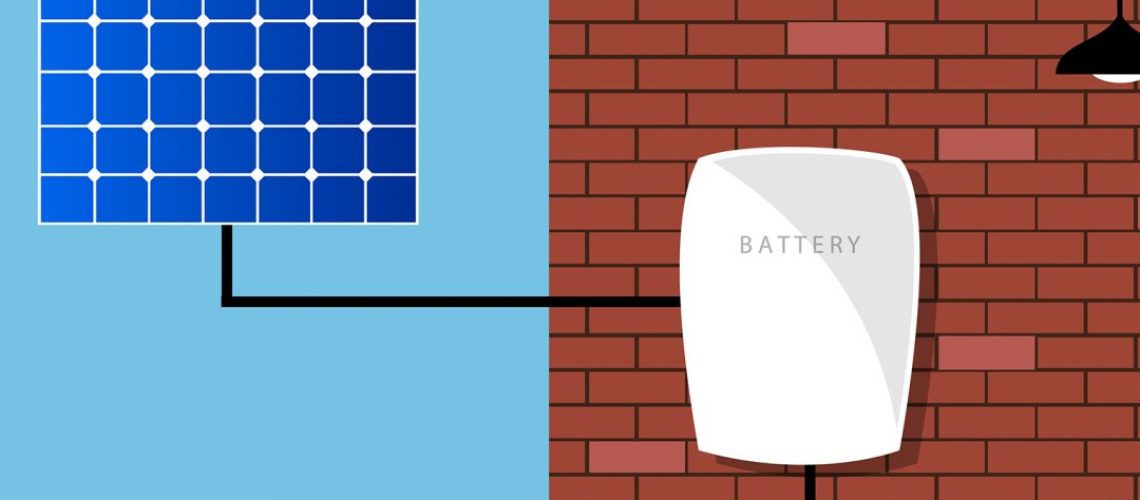What are battery storage systems for solar energy?
A standard on-grid residential solar energy system will stop producing power if its connection to the grid is severed. A solar energy system with an integrated battery storage system, your house will remain partially powered even when the electric grid is down. You typically won’t use a solar energy battery storage solution to provide electricity to your whole house but just the bare essentials such as your refrigerator, freezer, some power outlets for your cell phones, tablets etc.
Solar Energy Battery Storage Systems are also beneficial in locations where the electric company enforces a “time-of-use” policy where electric rates are raised during peak hours.
- Quiet, affordable backup power without the burning of fossil fuels
- Reduce demand charges by using solar + storage to reduce your power needs during peak daylight hours
- Take advantage of “self-consumption” – use your day’s solar harvest at night, reducing your dependence on the utility grid, and reliance on Net Energy Metering
- Residential solar generates electricity during the day and sends it to the battery for storage or immediate use.
- The battery’s intelligent software automatically manages which power source is used (grid or battery) to maximize the use of solar energy and save on your electricity bill.
- One-way storage can help you save is by using excess energy generated during the day to offset your evening usage.
- When your battery is depleted in the evening, you will start drawing electricity from the grid again
- If there’s an outage, battery storage can also provide power to your essential appliances and electronics.
- Keep your lights on, charge your phone, power your refrigerator and more
- And if your energy needs ever change—if you buy an EV or your family grows—you may add more solar panels and battery storage.
Capacity & power
The capacity is the total amount of electricity that a solar battery can store, measured in kilowatt-hours (kWh). Most residential solar batteries are designed to be “stackable,” which means that you can include multiple batteries with your solar energy battery backup system to get extra capacity.
While capacity tells you how big your battery is, it doesn’t tell you how much electricity a battery can provide at a given moment. To get the full picture, you also need to consider the battery’s power rating.
In the context of solar batteries, a power rating is the amount of electricity that a battery can deliver at one time. It is measured in kilowatts (kW). A battery with a high capacity and a low power rating would deliver a low amount of electricity (enough to run a few crucial appliances) for a long time. A battery with low capacity and a high-power rating could run your entire home, but only for a few hours.
Most solar batteries need to retain some charge at all times due to their chemical composition. If you use 100 percent of a battery’s charge, its useful life will be significantly shortened.
The depth of discharge (DoD) of a battery refers to the amount of a battery’s capacity that has been used. Most manufacturers will specify a maximum DoD for optimal performance. For example, if a 10-kWh battery has a DoD of 90 percent, you shouldn’t use more than 9 kWh of the battery before recharging it. A higher DoD means you will be able to utilize more of your battery’s capacity.
What are the best batteries for solar?
Batteries used in home energy storage typically are made with one of three chemical compositions: lead acid, lithium ion, and saltwater. In most cases, lithium ion batteries are the best option for a solar panel system, though other battery types can be more affordable.
- Lead acid
Lead acid batteries are a tested technology that has been used in off-grid energy systems for decades. While they have a relatively short life and lower DoD than other battery types, they are also one of the least expensive options currently on the market in the home energy storage sector. For homeowners who want to go off the grid and need to install lots of energy storage, lead acid can be a good option.
- Lithium ion
The majority of new home energy storage technologies, such as the, use some form of lithium ion chemical composition. Lithium ion batteries are lighter and more compact than lead acid batteries. They also have a higher DoD and longer lifespan when compared to lead acid batteries. However, lithium ion batteries are more expensive than their lead acid counterparts.
- Saltwater
A newcomer in the home energy storage industry is the saltwater battery. Unlike other home energy storage options, saltwater batteries don’t contain heavy metals, relying instead on saltwater electrolytes. While batteries that use heavy metals, including lead acid and lithium ion batteries, need to be disposed of with special processes, a saltwater battery can be easily recycled. However, as a new technology, saltwater batteries are relatively untested, and the one company that makes solar batteries for home use (Aquion) filed for bankruptcy in 2017.
Page Break
Now you can have a solar energy system that blends with your roof!


